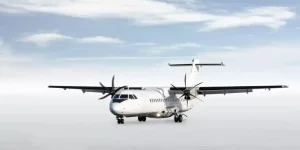- Views: 2K
- Replies: 13

The Council of Scientific and Industrial Research-National Aerospace Laboratories (CSIR-NAL) has announced significant progress in the development of the RTA-90, a regional transport aircraft designed to boost India's domestic aviation sector.
Key advancements during 2023-24 include major improvements in the aircraft's structural design, aerodynamic performance, and cockpit design.
Engineers at CSIR-NAL conducted extensive structural analysis and optimization of the RTA-90's fuselage. Focusing on factors like weight distribution, material thickness, and stress points, the team employed advanced simulation techniques to ensure a lightweight yet durable design.
This optimization process is crucial for maximizing fuel efficiency, a critical aspect for regional aircraft operations.
Aerodynamically, the RTA-90 has also undergone rigorous evaluation. Using high-fidelity Computational Fluid Dynamics (CFD) simulations, researchers analyzed the aircraft's stability and control characteristics.
This included simulating a full-scale model to optimize the size and shape of the tail surfaces and assess its overall aerodynamic performance. Detailed flow analysis helped refine the design of key components like the nacelles, winglets, and fairings, further enhancing the aircraft's efficiency.
A major milestone was reached with the completion of a full-scale RTA-90 cockpit mock-up. Equipped with advanced avionics and systems envisioned for the final aircraft, the mock-up provides a realistic environment for pilot training and evaluation.
The cockpit features next-generation displays, a Fly-By-Wire (FBW) system, and comprehensive controls for managing various aircraft subsystems. An electronic flight bag offers pilots essential data and calculations for enhanced situational awareness and decision-making.
CSIR-NAL's Propulsion Division also contributed to the project by developing a Cabin Air Compressor (CAC) for the RTA-90. This critical component will ensure passenger comfort and safety by maintaining cabin pressure during high-altitude flights. The development of the CAC is a significant step towards self-reliance in aircraft propulsion systems.
The RTA-90 program continues to gain momentum, with these advancements bringing the aircraft closer to realization. The project holds significant promise for India's aviation industry, offering a domestically-developed solution for regional connectivity and contributing to the growth of the country's aerospace capabilities.

